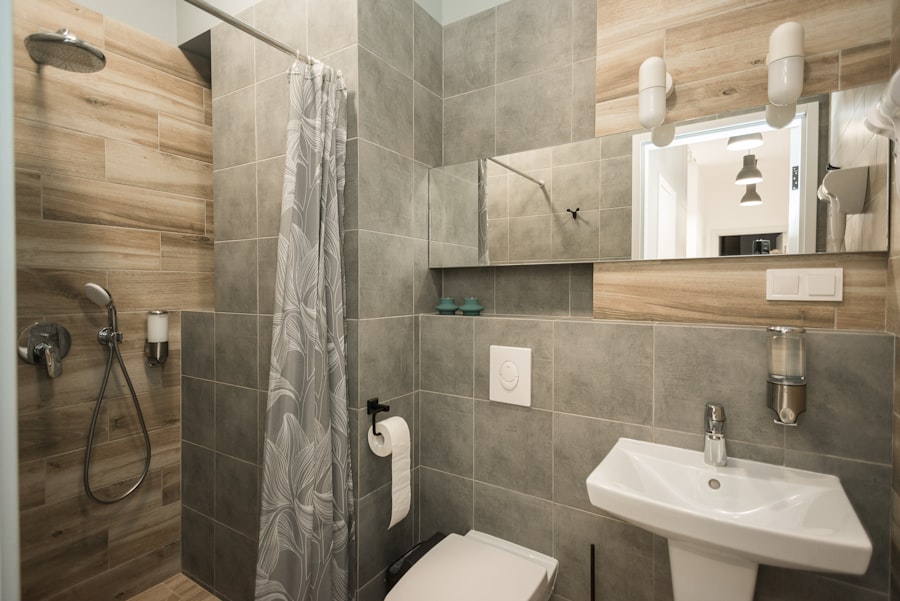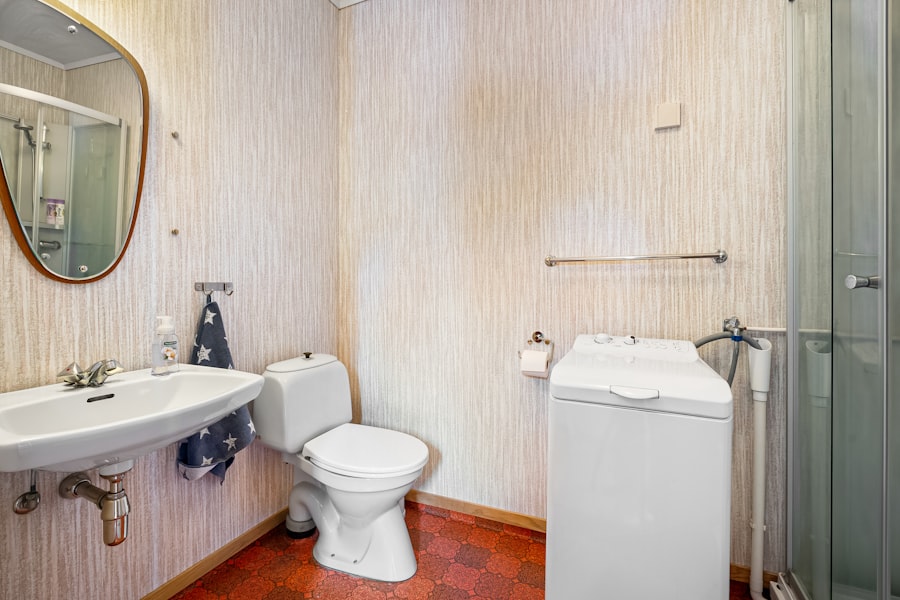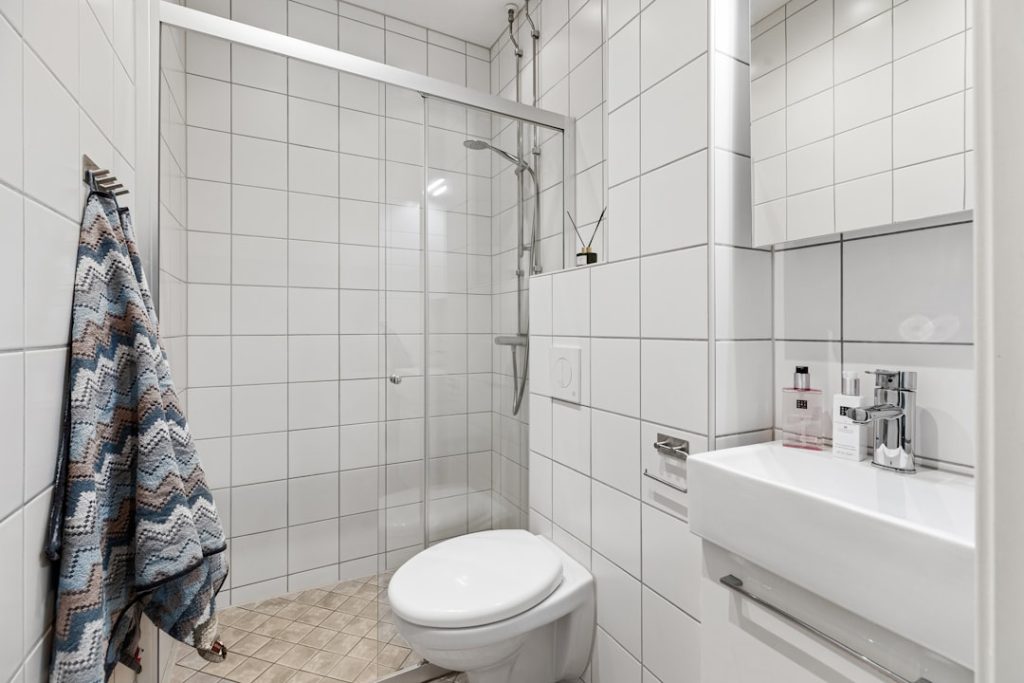A bathroom remodel can range from a simple facelift to a complete overhaul, and understanding the scope of the project is crucial for homeowners. At its core, a bathroom remodel involves updating or changing the existing features, layout, and aesthetics of the space. This can include anything from replacing fixtures like sinks, toilets, and bathtubs to altering the layout to improve functionality.
Homeowners may also choose to enhance the visual appeal of the bathroom by updating tiles, cabinetry, and lighting. The scope of the remodel will largely depend on the homeowner’s goals, budget, and the current condition of the bathroom. When considering a bathroom remodel, it is essential to assess the existing space critically.
Factors such as plumbing and electrical systems, ventilation, and structural integrity play a significant role in determining what changes can be made. For instance, if the plumbing is outdated or not up to code, it may require significant work to bring it up to standard before any aesthetic changes can be made. Additionally, understanding local building codes and regulations is vital, as these can dictate what modifications are permissible.
A well-defined scope not only helps in planning but also sets realistic expectations regarding timelines and costs.
Key Takeaways
- Bathroom remodel costs vary widely based on project scope and materials chosen.
- Labor expenses can significantly impact the overall budget, often matching or exceeding material costs.
- Additional costs like permits, design fees, and unexpected repairs should be factored into the budget.
- Saving strategies include prioritizing upgrades, sourcing materials wisely, and considering partial DIY work.
- Financing options and professional hiring decisions depend on budget, skill level, and project complexity.
Factors Affecting the Cost of a Bathroom Remodel
Several factors influence the overall cost of a bathroom remodel, making it essential for homeowners to consider each aspect carefully. One of the most significant factors is the size of the bathroom. Larger bathrooms typically require more materials and labor, which can drive up costs.
Conversely, smaller bathrooms may allow for a more budget-friendly remodel. The complexity of the design also plays a crucial role; intricate layouts or custom features often come with higher price tags due to increased labor and material costs. Another critical factor is the quality of materials chosen for the remodel.
High-end materials such as marble countertops or custom cabinetry can significantly increase expenses compared to more affordable options like laminate or standard tiles. Additionally, the choice between DIY work and hiring professionals can greatly affect costs. While DIY projects may save on labor costs, they can also lead to unexpected expenses if mistakes are made or if specialized skills are required for certain tasks.
Homeowners must weigh these factors carefully to create a realistic budget that aligns with their vision for the remodel.
Average Cost of Materials for a Bathroom Remodel

The cost of materials for a bathroom remodel can vary widely based on quality, brand, and style preferences. On average, homeowners can expect to spend anywhere from $1,000 to $5,000 on materials alone for a mid-range bathroom remodel. Basic materials such as standard tiles, fixtures, and cabinetry will fall on the lower end of this spectrum, while high-end options like natural stone tiles or designer fixtures will push costs higher.
For example, ceramic tiles may cost around $1 to $5 per square foot, while natural stone tiles can range from $5 to $15 per square foot or more. In addition to tiles and fixtures, other materials such as vanities, countertops, and plumbing supplies contribute significantly to the overall cost. A standard vanity can range from $200 to $2,000 depending on size and material quality.
Countertops made from quartz or granite can add another $50 to $150 per square foot. Homeowners should also consider additional elements like lighting fixtures and paint, which can further impact material costs. By carefully selecting materials that fit both their aesthetic preferences and budget constraints, homeowners can effectively manage their remodeling expenses.
Average Cost of Labor for a Bathroom Remodel
| Labor Task | Average Cost | Time Required | Notes |
|---|---|---|---|
| Demolition | 500 – 1,000 | 1-2 days | Includes removal of old fixtures and tiles |
| Plumbing | 1,000 – 2,500 | 2-3 days | Rerouting pipes and installing new fixtures |
| Electrical | 800 – 1,500 | 1-2 days | Wiring for lighting, outlets, and ventilation |
| Carpentry | 1,200 – 2,000 | 2-4 days | Building cabinets, shelves, and framing |
| Tiling | 1,000 – 3,000 | 2-5 days | Floor and wall tile installation |
| Painting | 300 – 700 | 1-2 days | Walls and ceiling painting |
| Installation of Fixtures | 500 – 1,200 | 1-2 days | Toilet, sink, shower, and bathtub installation |
| Total Average Labor Cost | 5,300 – 12,900 | 10-20 days |
Labor costs are another significant component of a bathroom remodel budget, often accounting for 20% to 35% of the total project cost. On average, homeowners might expect to pay between $50 to $150 per hour for skilled labor, depending on the region and the contractor’s experience level. For a typical bathroom remodel that takes about 40 to 80 hours of labor, this can translate into a labor cost ranging from $2,000 to $12,000 or more.
The complexity of the work being performed also influences labor costs. For instance, simple tasks like replacing fixtures may require less time than extensive plumbing or electrical work. Additionally, specialized trades such as electricians or plumbers may charge higher rates due to their expertise and licensing requirements.
Homeowners should obtain multiple quotes from contractors to ensure they are getting competitive pricing while also considering the quality of work and reputation of the professionals they hire.
Additional Costs to Consider for a Bathroom Remodel
Beyond materials and labor, several additional costs can arise during a bathroom remodel that homeowners should be prepared for. One common expense is permits and inspections required by local building authorities. Depending on the scope of the remodel and local regulations, these fees can range from $100 to several hundred dollars.
Failing to obtain necessary permits can lead to fines or complications when selling the home in the future. Another potential cost is related to unexpected issues that may arise during the remodeling process. For example, if walls are opened up during demolition, hidden plumbing or electrical problems may be discovered that require immediate attention.
This could lead to additional expenses that were not initially budgeted for. Homeowners should set aside a contingency fund—typically around 10% to 20% of the total budget—to cover these unforeseen costs and ensure that their project stays on track financially.
Ways to Save on Bathroom Remodel Costs

Homeowners looking to save on their bathroom remodel costs have several strategies at their disposal. One effective approach is to prioritize cosmetic updates over structural changes. For instance, instead of relocating plumbing fixtures or expanding the space, homeowners can achieve a fresh look by repainting walls, updating hardware, or installing new lighting fixtures.
These changes can significantly enhance the bathroom’s appearance without incurring high costs associated with major renovations. Another way to save is by shopping smart for materials. Many retailers offer sales or discounts on tiles, fixtures, and cabinetry throughout the year.
Additionally, considering alternative materials—such as laminate instead of solid wood for cabinetry—can provide substantial savings without sacrificing style. Homeowners might also explore second-hand options or clearance items at home improvement stores for unique finds at lower prices. By being resourceful and flexible with design choices, homeowners can achieve their desired results while staying within budget.
Budgeting and Financing Options for a Bathroom Remodel
Creating a detailed budget is essential for any bathroom remodel project. Homeowners should start by determining their overall budget based on their financial situation and how much they are willing to invest in the remodel. This budget should include all anticipated costs—materials, labor, permits, and contingency funds—to provide a comprehensive view of expenses.
It’s advisable to break down costs into categories and allocate specific amounts for each area to avoid overspending. For those who may not have sufficient funds available upfront, various financing options exist to help manage remodeling costs. Home equity loans or lines of credit allow homeowners to borrow against their property’s equity at relatively low-interest rates.
Personal loans are another option but typically come with higher interest rates compared to home equity products. Additionally, some contractors offer financing plans that allow homeowners to pay in installments over time. Exploring these options can help make a bathroom remodel more financially feasible while ensuring that homeowners do not compromise on quality.
Deciding whether to hire a professional or tackle a bathroom remodel as a DIY project is a critical consideration that impacts both cost and outcome quality. Hiring professionals brings expertise and experience that can be invaluable in ensuring that the project is completed correctly and efficiently. Skilled contractors are familiar with local building codes and regulations and can navigate potential challenges that may arise during construction.
However, this expertise comes at a price; professional labor can significantly increase overall costs. On the other hand, DIY projects offer an opportunity for homeowners to save on labor costs while allowing them to personalize every aspect of their remodel. However, it’s essential for homeowners to realistically assess their skills and experience before embarking on such projects.
Tasks like plumbing or electrical work often require specialized knowledge and tools; mistakes in these areas can lead to costly repairs or safety hazards down the line. For less complex tasks—such as painting or installing new fixtures—DIY can be an excellent way to save money while still achieving a fresh look in the bathroom. In conclusion, navigating a bathroom remodel involves careful planning and consideration of various factors that influence both cost and design choices.
By understanding the scope of the project, evaluating material and labor costs, considering additional expenses, exploring savings strategies, budgeting effectively, and weighing professional versus DIY options, homeowners can create a successful remodeling experience that meets their needs and enhances their living space.




